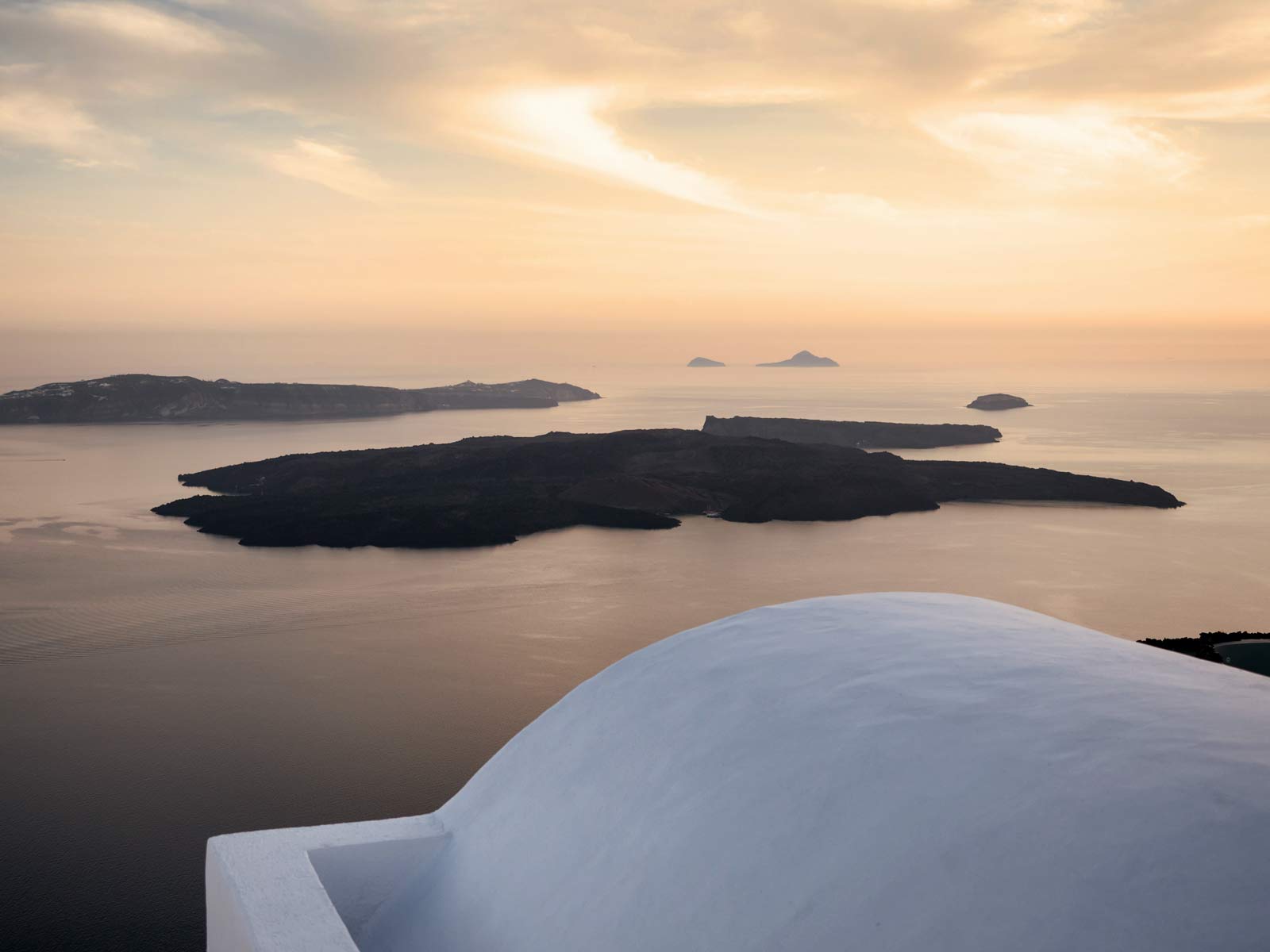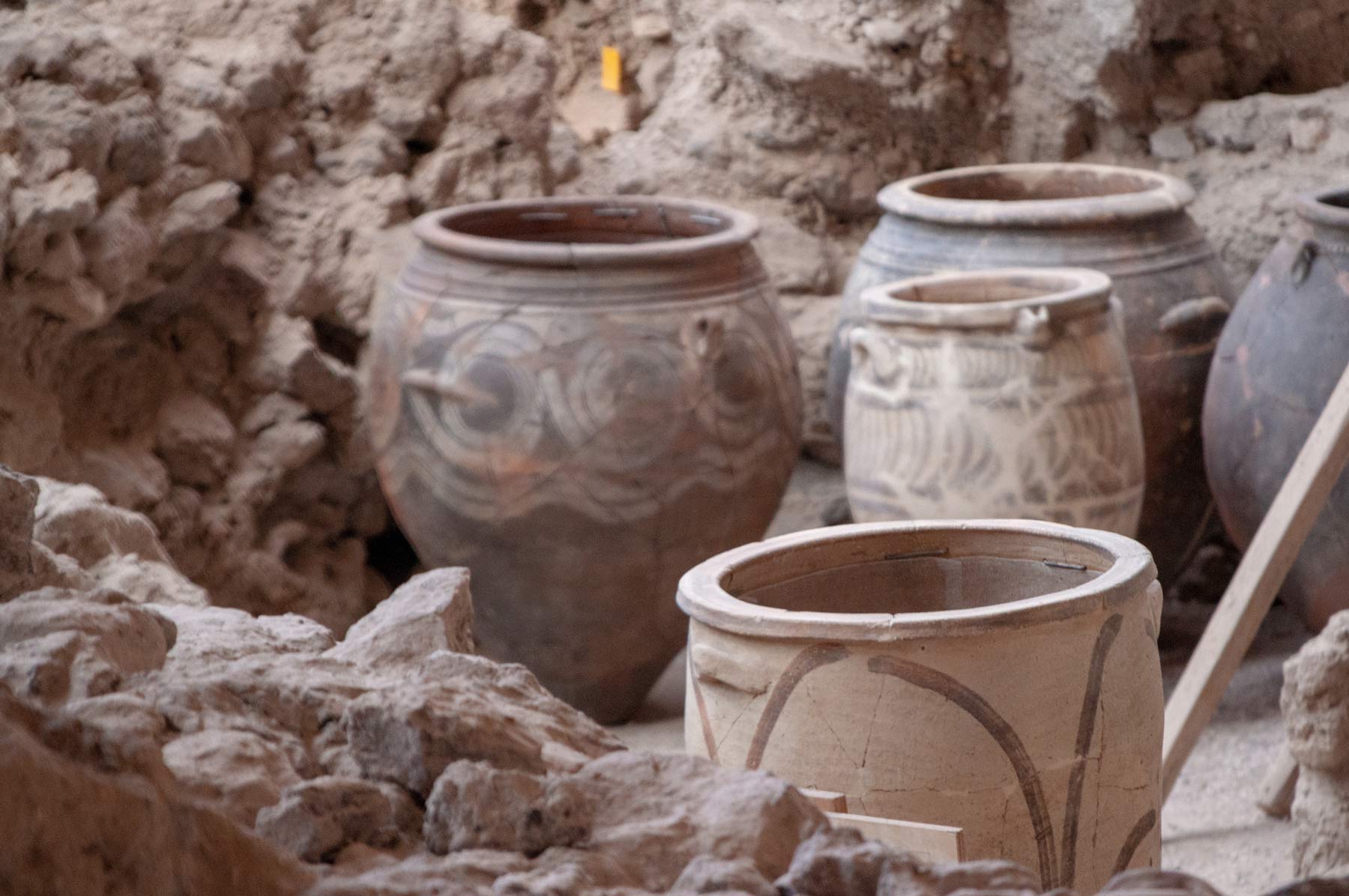A Natural Volcanic Spa
Santorini Volcano & Hot Springs: Everything you need to know

Santorini and its volcano come part and parcel: it’s a lovely twist of irony that a massively destructive event is responsible for the creation of the island’s caldera, one of the most beautiful and most visited spots in the world, but nature is nothing if not poetic. The once fearsome beast now lies dormant, and the two small -not to mention evocatively named- islets of lava, Palia Kameni and Nea Kameni (translated as Old and New Burnt respectively) offer themselves up for exploration to the island’s visitors.
Nea Kameni in particular, with its rugged, otherworldly landscape of red and black rocks is a popular choice as multiple day cruises carry visitors to its shores every day. A twenty-minute walk on a well-strewn path will take you to the top where you will admire a remarkable view of the volcano’s crater, the caldera, as well as the small cluster of islets of the archipelago. Keep in mind that, easy enough as the walk may be, you are advised to leave your flip-flops back at your hotel room as the high temperature of the soil can burn through their sensitive soles. There is also little shelter from the sun, so make sure to pack some water with you and dress appropriately.
Palia and Nea Kameni are also home to Santorini’s sulfuric hot springs. Swimming in the warm waters is an experience you won’t find on any other Greek island, and there are many health benefits to be enjoyed as well. A dip in the volcanic spa’s waters (always at a temperature of around 35°C) is thought to be therapeutic for the muscles and the joints. Rich in iron and manganese, the waters also boast anti-inflammatory qualities and best of all: swimming there is free! Combine it with a makeshift mud bath and enjoy an absolutely natural spa experience, just keep in mind that light-coloured bathing suits might stain from the sulfuric water.
It should be noted, however, that the volcano’s effect on the island is not limited to the crater and the hot springs. History afficionados will be interested to know that Santorini is home to the Aegean Sea version of Pompeii: Akrotiri. A prehistoric city preserved under ash and lava, Akrotiri is one of the few remaining testaments of a once-thriving civilization. Take a walk through history there, or visit the museum of Prehistoric Thera at Fira, which houses Akrotiri’s famous frescoes, “the Monkey”, “the African” and “Spring”.
